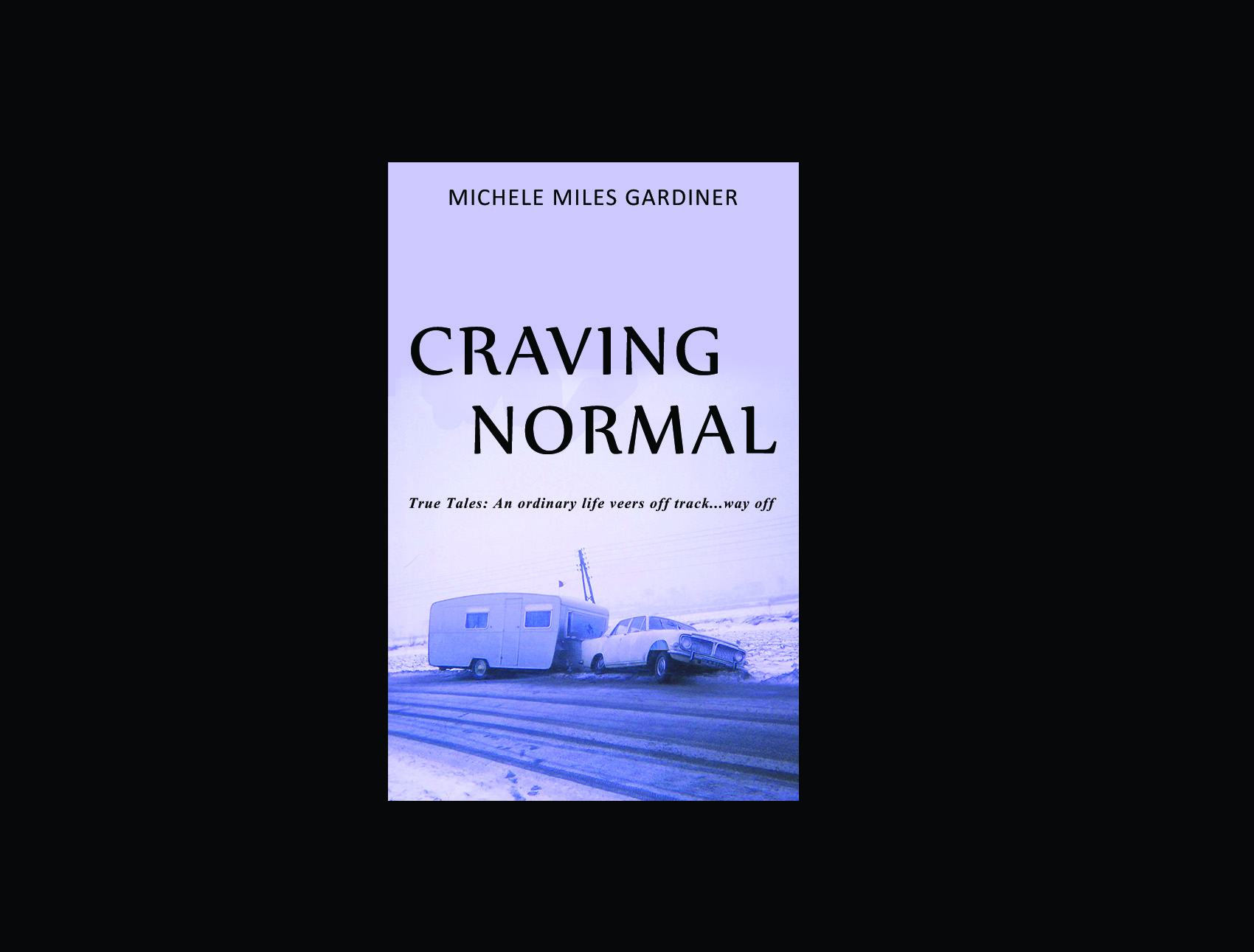This reviewer left such a thoughtful review, I feel they understood my objective.
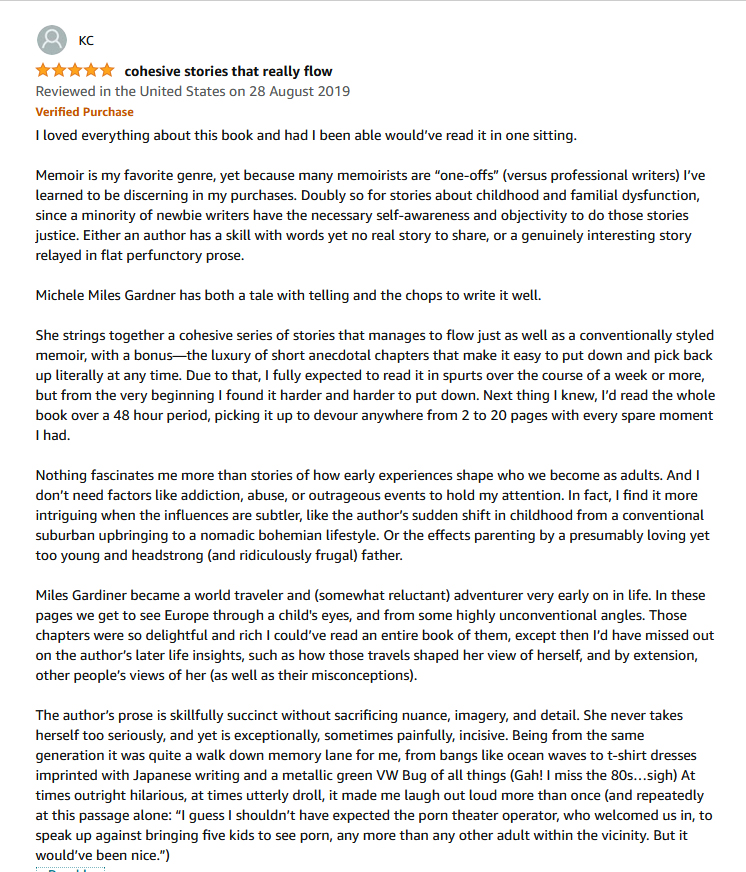
My book, "Craving Normal," available on Amazon.
Well, this is a wonderful way to start my day–
A man reading my book in England wrote this to me:
“Oh man, your book is brilliant, heartfelt and hilarious! I can’t stop reading it. The story about Santa is fantastic, and when I turned over the page to see the picture of you with suicide Santa splayed out on the roof, I was crying with laughter. You’re a true talent.”
Greg Firlotte emailed me this, about reading my book: “…the family dishrag passages!! I laughed out loud in my room late into the night over these and thought if anyone passed by my door and heard me laughing uncontrollably, they might have me committed today! Can’t wait for tonight’s reading!”
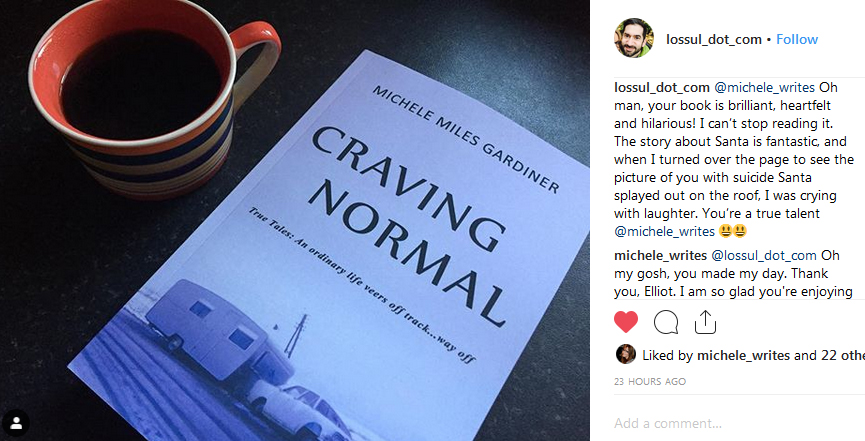
This is from a lovely woman in Spain
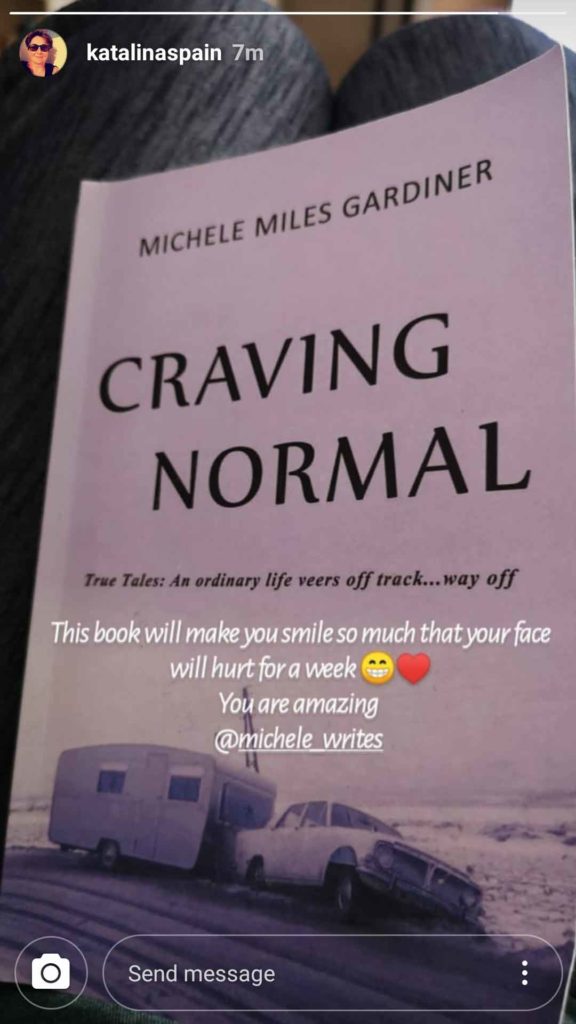
From Canada! Here’s another wonderful message from a reader my book, “Craving Normal.” Though our lives have been different, my stories resonated with her. She wrote, “Thank you for taking me on your crazy journeys through life and reminding me to chuckle along the way.”
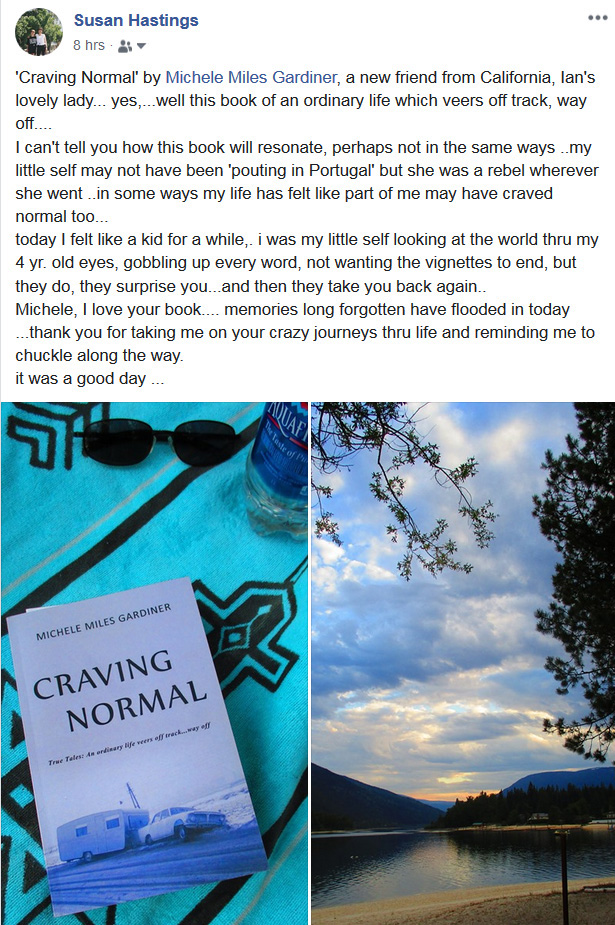

You can buy my book at my favorite Los Angeles bookstore, Skylight Books.
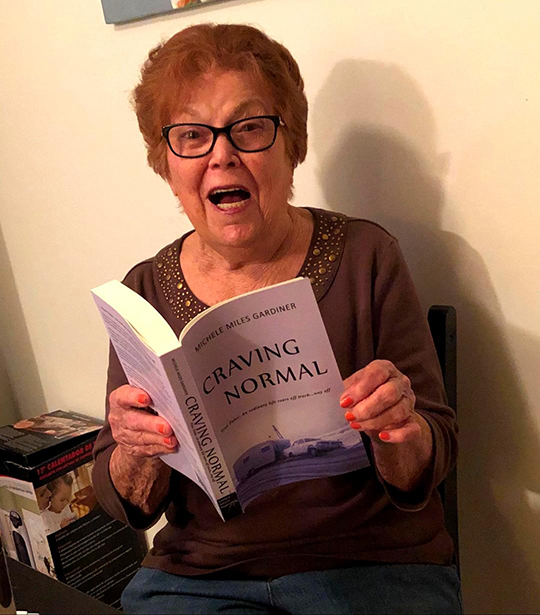
I signed my first book, yesterday.
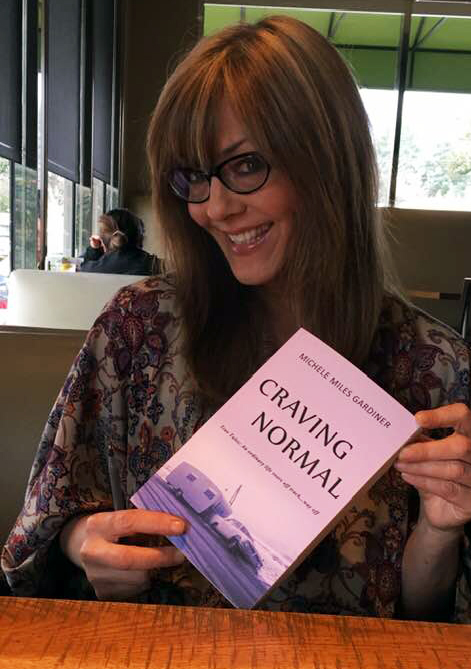
“Craving Normal,” is now available to buy in print, here. And the eBook will be available soon. I hope you enjoy my stories, reading my view of life–as kooky as many of my tales may be. To quote my editor, “I enjoyed your crazy stories…” Well, I hope you do too.
Wheeew, this book has been like going through birth and raising a kid. The time it took to get this baby out, it should be driving by now. With that in mind, hop in and take a ride!
If you enjoy my tales, I’d love for you to leave a review on Amazon and/or Goodreads.com.

1 Comment
Sex! Now that I have your attention… I will talk about that, but mostly this thought spew may only interest personal essay writers/readers, memoir writers/readers, editors/agents/publishers, English lit academics, parents of kids under 10, kids who feared the VD man (explained below), and my daughter, to whom I wrote a personal note. Anyone else is welcome to read, of course. See, I know you’re scrolling by, notice too many words to deal with on a Sunday morning, and wonder if you should wade in to check out this post, so I’m telling you: Scroll on by! (This made more sense when I posted it on Facebook.)
Here goes: Writing academics, publishing experts, English lit types have defined story as ALWAYS FICTION. Always. A nonfiction story is called a personal essay. It’s that simple. Final. But for the last fifteen years or so, I’ve read my STORIES at bookstores’ open mics. Nobody asked me to get up and spout my personal essay. I go to theaters to hear other storytellers, like The Moth from NYC, which is nationwide now. There’s a growing STORYteller movement. People get up and tell personal STORIES; they call themselves storytellers.
In my book, “Craving Normal,” here’s how I’ve been thinking of the pieces in my collection – Some are stories where I’m the protagonist. There’s a beginning; what my character wants; conflict as my character tries to get there, and resolution. An example of this is my story “Suicidal Santa.” Within the story I do mention what’s going on in my community and the world, to give context. But it’s not the focus.
Meanwhile, in my book, I do have personal essays, where I wrote commentary on societal subjects, with personal anecdotes. I am not the protagonist in a story. It has a thesis statement, ending in a personal anecdote to back it up.
For example, there’s “My Barbie the Slut,” where my focus is one subject: SEX, the message I, at nine years old, received about sex. Sex as filtered through my kid mind and how I perceived what I was being told via TV, movies, songs, books. I’d pluck books from my parents’ filled book shelves, read Erica Jong’s “Fear of Flying,” and Michael Medved’s “What Really Happened to the Class of ’65?” Wow. Lots of teen sex (Hey, I thought those early 1960’s kids waited until they married?). My nine-year-old brain spun. Eye-opening! (I’d like to read that now as an adult.)
While adults thoughtfully gave me educational talks, those were in conflict with the messages all around me. So, in “My Barbie the Slut,” I storify my essay with my nine-year-old moments: beginning with my friend and me playing Barbies. Now, as often as I heard Helen Reddy sing “I am woman hear me roar,” and my mom gave me nice talks supporting women… Please! Barbie was all sex – big boobs, tiny waist, legs that could go behind her ears. AND! Accessorized with mini dresses and a sports car. That, plus the messages I got from movies: “Hi. Nice to meet you! Would you like to get naked and go to my bedroom? Or should I just tear your clothes off here in the doorway?” – no wonder I had my Barbie and Ken humping so hard, I scuffed their smooth plastic crotches.
Watch out, tangents ahead!
Parents of young kids – Be alert. Your kids sure are -> TV. Movies. Racy magazines found. Those nice talks adults gave me with healthy messages? Totally drowned out by the loud outside messages coming from a variety of sources. Hey, I was an observant little human (as most kids are). I paid more attention to the world around me than listen to lectures. Even though my parents limited my TV viewing, what little I saw I absorbed. I’d seen enough “Love, American Style,” episodes to dream of becoming a foxy stewardess with a guy in every city (Oh the conflict! Having to remember not to mix up boyfriends… flabby formulaic sitcom fodder). Hey, I was no dummy. I knew what Bob Eubanks on the “Newlywed Game” meant when he said “making whoopee.” His smirk gave part of it away. And then the way the contestants giggled and gushed, “Oh, Bob!” as they blushed, confirmed whoopee was about “It.”

IT. Doing IT if it feels good. Getting IT on. IT was piped into my head as if on a corporate Muzak loop. But do I want IT? When do I want IT? What if I don’t want IT?
And then cut to a commercial break for, say, Summer’s Eve. Those ads totally confused me. What in the world made these women so happy they would run through fields of wildflowers, huge smiles and flowing hair?
Even the choice of boogie monster we San Francisco State University student housing neighborhood latchkey kids feared made it clear how influenced we were by our sexually-charged era and society. We created scary neighborhood lore, the way other kids might say the most dilapidated house on the block is haunted. It started with the older teenage boys on our street. They told us about a naked man running through the eucalyptus groves near the handball courts of San Francisco State University. To enter the grove area we had to go through a hole in a chain link fence below a sign that said, in large red letters, “Danger!” So we appropriately called the land where The VD Man supposedly lurked, Danger.
NOTE TO MY DAUGHTER: If you read this, now you know why I was so on top of what movies and TV shows you watched, so much so that little you would ask, “Mommy, is this appropriate?” And why teenage you thought I was such a nagging bore. I know from my own experience being a kid, how messages are absorbed and how it’s confusing. Heck, soda and beer companies don’t pay hundreds of millions of dollars (or whatever it is) to advertise during the Superbowl because TV messages DON’T work. (Remember this if you become a parent. TV as a babysitter is like leaving your kid with a whacked out crackhead who also likes to sell you lots of pharmaceuticals and fear. Fear is a great manipulator. But it does sell drugs and insurance. Would you leave your kid with that crackhead?)
Anyway, my point is this: “Suicidal Santa” is in story form vs. “My Barbie the Slut,” which is societal commentary with personal anecdotes has some storyification, and what I call a personal essay.
Because I will be publishing under my own Exotica Gooch Publishing, I can do what I want. I will continue to blend my genres. *Exotica Gooch is my alter ego (There’s a story behind it, but I’ve yammered enough.)
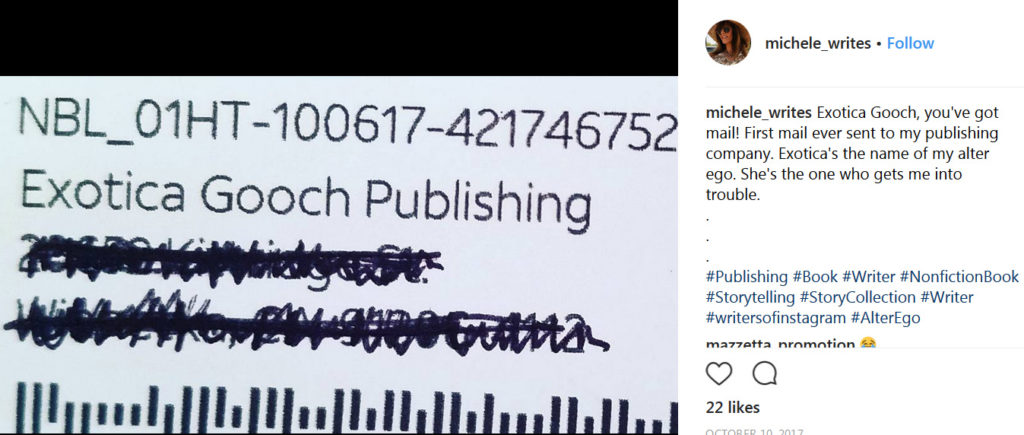
If you got this far. Thank you.
Leave a CommentWelcome to my new blog! I hear Rodney’s voice: “Tough crowd. Tough crowd.”


Excerpt from my book “Craving Normal,” in my story “Confessions of a Hollywood Extra”:
While working as an extra on the movie “Back to School,” with Rodney Dangerfield, I sat about ten feet from Rodney and Sally Kellerman as they prepared to do a scene—the quiet of the set before the cameras rolled allowed my voice to carry. My female newlywed friend, another extra, wondered if I wanted to get married. The last thing on my mind! So I said, “I’m not meeting guys nice enough to go out with in LA. Can’t imagine finding one to marry.” My voice carried through the silent crowd.
Rodney’s voice boomed toward me. “Hey, Honey! Come down here! I’ll marry ya! I’ll marry ya, right now!” My face turned hot, and I’m sure as red as a tomato, while Rodney, the crew, and the extras laughed. Well, that was one way to shut me up. And it did.
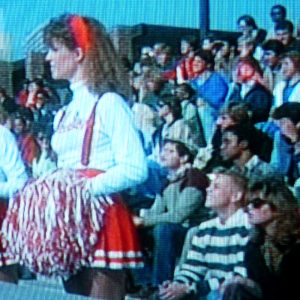
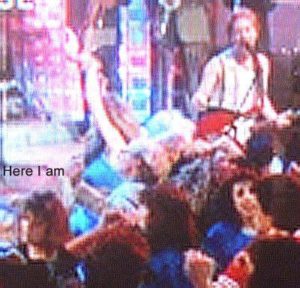
Bottom left, dancing to Oingo Boingo in the
Dead Man’s Party scene, in “Back to School.”
Jen (the blonde in the video thumbnail) is my newlywed friend I mentioned in my Rodney Dangerfield moment of humiliation. I’m dancing in this Oingo Boingo
video, next to Jen. But you have to stop the video to find me. And, of course,
I DID just that. I’m at 2:08.
Leave a Comment
Before I ever dared publish my writing, or think about writing my own book, “Craving Normal,” (Because I don’t think I’ve bored you enough in previous posts about MY BOOK. Did I mention I wrote a book?) I merely admired the work of real writers, while hiding my own stories in binders. At the time, one of my favorite LA writers was Sandra Tsing Loh, author of “Depth Takes a Holiday”, and other work. Sandra had me hooked after I read her Buzz Magazine article, “The Joy of Temping,” where she wrote about working as a temp in the North San Fernando Valley – a “land of fluorescent lighting, faux hardwood paneling, olive-green carpet and gummy IBM Selectrics.” There, she was forced to wear nylons and eat lunch from the vending machine. Of course, the story was way more hilarious than my second-hand telling… But it made me laugh and I related. I’ve lived that temp life in the Valley. I knew just that color green carpeting.
Anyway, I began buying Buzz Magazine just for her witty tales of life in the San Fernando Valley. Reading her pieces inspired me to submit my writing. So I really wish my exchanges with Ms. Tsing Loh could have been wonderful. But, no! I had to make a fool of myself.
So, in the mid 1990s, when my husband and I went to a friend’s party, and I saw Sandra Tsing Loh there – dancing in front of the band – I knew I had to meet her. And, little did I know, our husbands, both musicians, know each other. Somehow we (Sandra and I) ended up at the same table. I don’t remember how. But it probably involved me skulking over there like a twelve-year-old fan. I cringe to recall the entire exchange. But part of it went something like this:
Me: Yeah, I’m taking a writing class right now…
Sandra nods and smiles.
Me: But my teacher, she smells a little musty – you know, she’s a little artsy-fartsy…
Right then, I wanted to smack myself in the head. I’d never, ever used that goofball phrase before. What a dork! I meant my teacher was a little new-agey, touchy-feely, took herself too seriously for my taste. Instead, I just blurted “artsy-fartsy.” It’s a phrase that might sound right coming from a 70-year-old woman who buys her living room paintings from Walmart to match her sofa.
Right about then is when Sandra began looking around for her husband, the bathroom, a drink, any reason to escape. I got the idea every new person she meets tells her about their dream to write, so maybe she just figured I was another writer-wanna-be, one who uses stupid phrases like “artsy-fartsy” and would just shame the writing world if I ever got published.
Well, that’s what I was thinking she was thinking. Sandra was actually really nice and supportive, leaving me with something like, “Well, we need more women writers,” before fleeing.
Still, I wanted to stick a cocktail toothpick in my eye.
I enjoy Lev Yilmaz’s work. But if I ever meet him, I’m sure it’ll be awkward.
“Craving Normal,” my stories as a child growing up in the 1960s and beyond, will be available soon. Here’s my nearly complete book cover. Think I’ll keep “Enthusiastic quote goes here.”
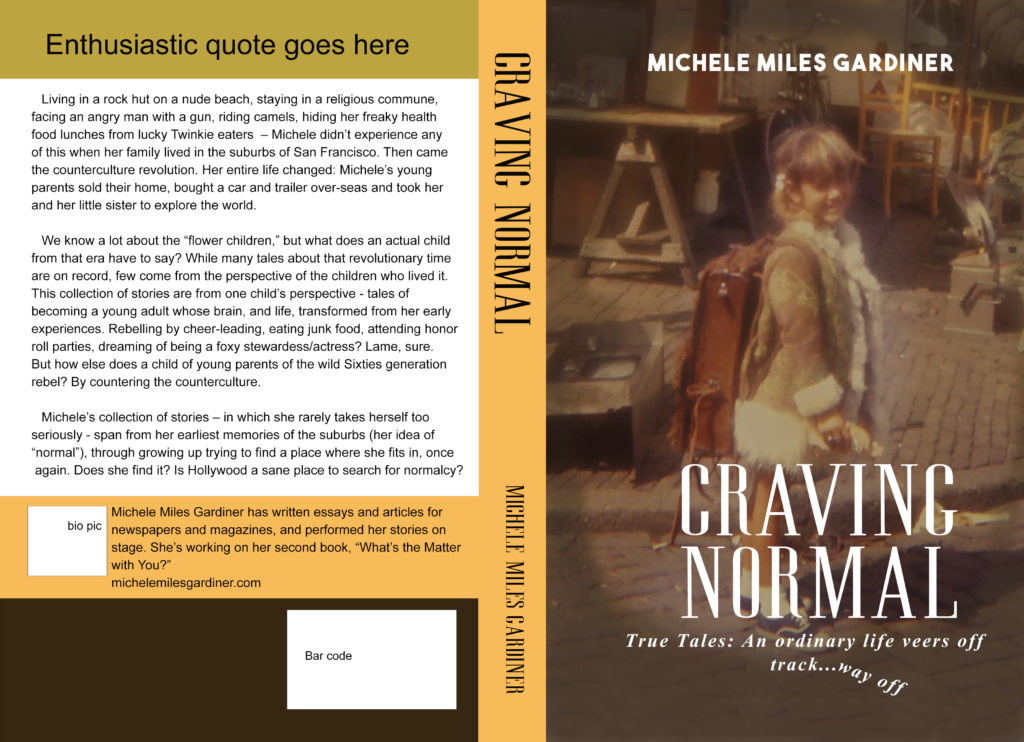
“Craving Normal,” by Michele Miles Gardiner – back book cover text:
Living in a rock hut on a nude beach, staying in a religious commune,
facing an angry man with a gun, riding camels, hiding her freaky health
food lunches from lucky Twinkie eaters – Michele didn’t experience any
of this when her family lived in the suburbs of San Francisco. Then came
the counterculture revolution. Her entire life changed: Michele’s young
parents sold their home, bought a car and trailer over-seas and took her
and her little sister to explore the world.
We know a lot about the “flower children,” but what does an actual child
growing up in that era have to say? While many tales about that revolutionary time
are on record, few come from the perspective of the children who lived it.
This collection of stories are from one child’s perspective – tales of
becoming a young adult whose brain, and life, transformed from her early
experiences. Rebelling by cheer-leading, eating junk food, attending honor
roll parties, dreaming of being a foxy stewardess/actress? Lame, sure.
But how else does a child of young parents of the wild Sixties generation
rebel? By countering the counterculture.
Michele’s collection of stories – in which she rarely takes herself too
seriously – span from her earliest memories of the suburbs (her idea of
“normal”), through growing up trying to find a place where she fits in, once
again. Does she find it? Is Hollywood a sane place to search for normalcy?
“Craving Normal” trailer here: https://youtu.be/Z0M1BTXK20Q
Leave a CommentThe reason life is like dating is if everything went smoothly, just as we plan, all the time – no awkward experiences, no “get me outa here!” moments – it would be much harder to appreciate the pleasant moments. Life can be like people we may date: Awkward, odd, horrifying… but then, along comes a good one. After all the bad dates, you appreciate him/her all the more.
Here’s one blind date I experienced:
Right when we met and got into his car, the guy started making goo-goo eyes at me, trying to hold my hand, not taking the hint from my don’t-touch-me body language – arms folded over my chest, body pressed into the passenger door, and nervous laughter. At a stop light, he stared at me for an uncomfortably long time and said, “You remind me SO much of my dead sister.”
Nooooooooooo!
Oh, and it only got worse. The entire night he stared at me with a creepy reverence, as if I were an angel whom he’d never let go. Hence my physically wrestling him all night until I finally fled.
Still talking to myself on this blog, but if you happen to read this share one of your “date from hell” stories. I’m not the only one, right? We’ve all endured crappy dates. I know. Tell me about it.
2 CommentsYou can take the child out of the wild, but not the wild out of the child… apparently. This may explain many of my stories. When your brain is formed a certain way – on freedom, travel, adventure – makes it hard to be happy sitting in a cubicle, or locked up in school, following bells, rules and clocks. It’s a huge reason I’m self-employed. And why I’m still wild today.
Photo: Nude beach, Mykonos, Greece. I’m second from left; Little sister, far left, with beach friends.
I write about living in a rock hut on this nude beach in my book, “Craving Normal.” The story’s called, “That’s Not An Eel!”
(Photo: Here I am orating behind the podium at Anarchist Forum in Hyde Park, London. And, yes, I’m wearing lederhosen. See, you’d be ranting too if you had to wear suede shorts with suspenders, didn’t have a TV or any junk food. My dad wrote on this slide, “Michele mouthing off.” My mom said I drew a small crowd.)
Look I’ve been working on my book, “Craving Normal,” for so long I have posts on my dusty old blog about it… from – gulp! – ten years ago. As a lover of words, writing and books, every year I attend the LA Times Festival of Books. Here’s one such visit I blogged about on my now defunct (or is it de-funked, as in lost its funk?) blog, “Aprilbaby’s California Life” –
I walked by the NPR booth and heard author Susan Straight being interviewed. I stopped because I heard her mention her eldest child was at the Coachella music festival. The interviewer asked, “Oh, so do you think she’ll tune in to hear you on the radio?”
I knew I could relate to Susan when she said, “Uh, no. She doesn’t listen to me at home. Why would she want to hear me on the radio?” Spoken as a true parent to a teenager.
Susan Straight is an author from the Inland Empire. I only learned that after stumbling upon the book, “Inlandia,” and saw that the forward was written by the very same Susan Straight. Intrigued, I bought the book and attended a panel discussion with Susan and other writers from “Inlandia,” an anthology of writers from the Inland Empire.
My only time spent in the Inland part of California is whenever I have to pass through it heading for the San Bernardino Mountains to go skiing or the one time I cruised down part of Route 66. As the writers of “Inlandia” tell it, their home has been disparaged as nothing more than where the Hell’s Angels, neo-Nazis and smog dwell. Until then, I knew so little about the Inland Empire, I didn’t even realize that much about the area.
During the panel, the writers spoke of a place they grew up where orange groves and date tree forests were so vast they’d get lost in them; where the Santa Ana winds and the sand would blast the paint off of cars; where the air smelled of Eucalyptus and orange blossoms. It was where they arrived, grew and stayed.
As a resident of the San Fernando Valley, another maligned Southern California area, I could relate. While I’ve only read a few chapters of “Inlandia,” I’m really enjoying getting lost in the stories of their misunderstood land.
As I bought “Inlandia” from the Heyday Publishing Founder, Malcolm Margolin, he asked me what I do. I told him I’m writing “Craving Normal,” my stories of growing up in California and traveling the world as the kid of hippies. Malcolm, the bearded Allen Ginsberg look-a-like, threw back his head and laughed. “Did your parents feed you lentil loaf when all you really wanted was junk food?”
I slapped him on the shoulder. “Yeah, how’d ya guess?”
He told me his kids could relate as children of hippies.
“Yep, I just wanted a Twinkie,” I told him.
He nodded in sympathy, as if he’d heard it a million times from his own now-adult kids.
Yet I’ve got a craving to be heard, so I persevere, closer than ever to having my book, “Craving Normal,” published. In all these years a lot has happened – raised my daughter who went off to college; started a successful business, Tree Audio; dealt with life and death – but always I go back to my stories, crafting them, shaping them, editing them. My craving is a constant obsession, as you see.
Leave a Comment
